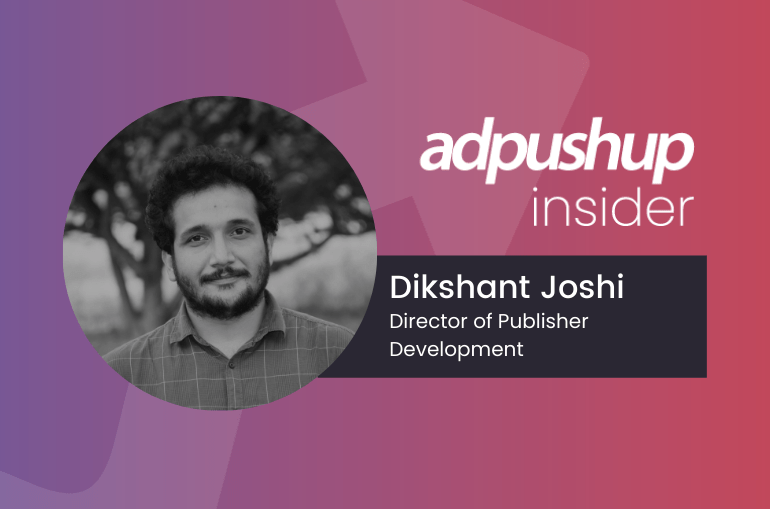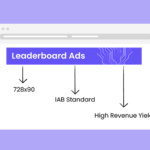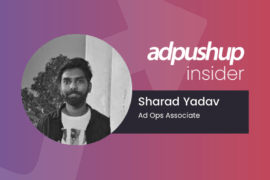In order to understand Google’s policy violations (GAM and Adsense), we consulted Dikshant, who talked about important policies and how to resolve them.
Navigating through the ad tech landscape is perpetually riddled with technical complications and if we add Google Ad Manager/Google AdSense policy violations into the equation, the phrase ‘tread carefully’ becomes much more significant.
Quite obviously, most publishers do not want to get blacklisted by Google and hence, try their best to steer clear of any policy violations. But, despite well-intentioned efforts, there are practices that publishers might be overlooking and which may lead them to violate GAM and AdSense policies.
To give publishers a clear idea of what they must adhere to, to avoid getting banned by Google, we had a chat with Dikshant Joshi, Director of Publisher Development at AdPushup. Dikshant walked us through the common and sensitive policy violations in both GAM and AdSense, best practices for avoiding them, and resolving policy violations.
Let’s take a closer look at the key highlights of the conversation.
What Role Do Google’s Policies Play?
According to Dikshant, Google puts high emphasis on ‘user intent’. Therefore, any guidelines or policies are essentially placed to protect user interest. Additionally, these guidelines ensure brand safety for advertisers.
So, while Google is providing publishers with a way to monetize their websites, it also has to take into account the interest of both users and advertisers. Policies then make sure that every party in the ad tech industry is able to function in a safe environment.
What are the types of Google policy violations?
Dikshant suggested that policy violations in Google ad manager and AdSense revolve around three major aspects- content, ad placement, and traffic.
Content Policies
Policies around content are among the most important Google policies because without legitimate content, publishers will not be able to monetize their websites effectively. Additionally, in case Google discovers that your website’s content is violating policies and isn’t prioritizing brand safety, then the chances of resolving those violations will be next to impossible.
What to avoid for ensuring the quality of your content:
- Plagiarised content
- Content based on restricted categories or illegal content (for example, content that promotes child abuse, is sexually explicit, and is dangerous)
- Misleading content
- Any content that contains unwanted or malicious software
Policies related to ad placement
The reason why ad placement policies are important is that ad placement/layout greatly affects user experience which is Google’s top priority. Ad placement violations are also the most common. Publishers need to pay attention to their ads vs content ratio on the website. It’s pretty obvious that if the number of ads on the website is more than the content then it’s not providing the best user experience. These violations however, can be resolved easily by optimizing your website according to the guidelines provided by Google.
What to avoid for improving user experience:
- Inappropriate advertisements that draw unnecessary attention towards them
- Ads right beside an image
- Any content that mimics ads
- Language or signage for promoting clicks on ads
Quality of traffic
The traffic on any website should be verified and any type of click fraud and bot traffic will lead to policy violation. This is because any kind of invalid traffic will incur losses to advertisers. In an ideal situation, publishers should be getting high quality traffic from search, which will benefit both publishers and advertisers.
What to avoid for receiving high quality traffic:
- Clicking on your own ads
- Using paid traffic sources
What are the repercussions of violating Google’s policies?
Dikshant stated that initially when these policies were implemented by Google, any policy violation mostly led to the suspension of the account. But after some deliberation and feedback from different parties in the ad tech community, Google implemented another system, wherein, the entire account is not necessarily suspended on a permanent basis.
“But the level of policy violation matters in this case.”
For instance, if some part of your website’s content is in violation of a content policy, but the rest of the website is adhering to the guidelines, then your account won’t be suspended. Now if only one page of your website is violating any policy, then Google will stop serving ads on that particular page and won’t ban ad serving on the whole website.
A page-level ban is on the basic level and precedes a site-level warning. A publisher’s site can be disabled if multiple pages are in violation of any of the policies. More importantly, if some type of shady activity is occurring on your pages, the probability of your site getting disabled increases drastically.
How to fix policy violations?
Dikshant advises publishers to adhere to Google’s guidelines in the first place. Ideally, publishers should be aware of any kind of changes or additions that Google is making to its policies. This can help them in staying a step ahead and will save them from the pain of going through any kind of extra steps that are needed for fixing issues.
“But definitely instances might occur which may lead to policy-related issues. In such a scenario, publishers can always go to the policy center and take adequate measures, depending on the nature of the violation, for resolving the issue.”
“After fixing the issue on your site, you can inform the policy center that you have taken care of the issue and your site is now clean.”
“If your site or website has been terminated due to some policy violation, you can also file an appeal given that you have fixed all the violations that were occuring on your site.”
You can also take a look at this video to get a sense of Google’s policy violations:
Are there any policy violations that cannot be resolved and will definitively result in a banned account?
Dikshant told us that Google is very strict about policies related to content and invalid activity, and it’s almost impossible to get an account reinstated in such cases.
“The main reason for this is that Google also has to keep in mind the interest of advertisers. People using adwords are credited some amount back if such activities are happening on the Google display network. This basically ensures credibility for the entire ad tech ecosystem and makes sure that both advertisers and publishers are able to function in the industry in an appropriate manner.”
Best practices for avoiding policy violations in Google
In Dikshant’s opinion, one of the things that publishers can do to avoid getting banned by Google is work with a GCPP partner (like AdPushup), someone with experience who will be able to help publishers navigate through all the guidelines.
Some other important points to consider are:
- “My number one recommendation would be to try to be in the shoes of a user, as Google’s policies are designed while keeping the user in mind. For example, policies around valuable inventory, mirroring of ads, labelling etc are all designed for providing enhanced user experience.”
- “Advertisers are the ones spending in the ecosystem, hence keeping their interests aligned is another important aspect, which Google further kept in mind while designing the policies. So, as a publisher, your success is directly aligned to their success. For instance, policies like illegal content, keywords, and placement policies are aligned with the advertiser’s interest.”
- “Lastly, proactively knowing the policies and making sure that the website is compliant is probably the best thing a publisher can do. Other than that, you always have the option of acting reactively- keeping up with policy center updates to resolve the flag at the earliest will undoubtedly work in your favor.”
Final Thoughts
While publishers may feel that they are being scrutinized too harshly, they need to understand that Google’s policies are set in place to make sure that every party in the ad tech industry feels safe. Following best practices and making sure that they are one step ahead is definitely the best rule that every publisher can adhere to.
If you have any doubts regarding any of the things discussed in this blog, you can contact Dikshant at dikshant@adpushup.com or reach us at blog@adpushup.com.
FAQs
We Ensure that only Google employees, contractors, and agents have access to personal information. A person with access to this information is subject to strict contractual confidentiality obligations and may be disciplined or terminated if they fail to meet them.
i. Launch the Google Apps Device Policy app.
ii. Click Unregister. The work account has been removed from the device.
iii. Tap Accounts in the Settings app.
iv. Set up Android Device Policy again using the work account.
We may suspend accounts if we find violations of our policies or Terms and Conditions. Your account will be suspended immediately if we detect an egregious violation.

Shubham is a digital marketer with rich experience working in the advertisement technology industry. He has vast experience in the programmatic industry, driving business strategy and scaling functions including but not limited to growth and marketing, Operations, process optimization, and Sales.







